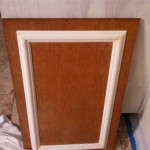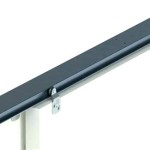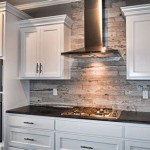Rejuvenate Your Kitchen: Refinishing Cabinets
The kitchen is often considered the heart of the home, and its cabinets play a significant role in defining its overall aesthetic. Over time, however, cabinets can become faded, worn, or outdated. Refinishing them is an excellent way to breathe new life into your kitchen without having to replace them.
Refinishing cabinets involves several steps, each of which requires attention to detail and careful execution. Here are the essential aspects to consider:
1. Preparation
The first step is to prepare the cabinets for refinishing. This includes removing all hardware, such as knobs, handles, and hinges. Next, thoroughly clean the cabinets to remove any dirt, grease, or grime. You may need to use a degreaser or mild abrasive cleaner depending on the condition of the cabinets.
2. Stripping
The next step is to strip off the existing finish. This can be done using chemical strippers, heat guns, or sanding. Chemical strippers are effective but require proper handling and ventilation. Heat guns can be used to soften the finish, making it easier to scrape off. Sanding is a more labor-intensive method but provides more control over the removal process.
3. Sanding
Once the existing finish is removed, the cabinets need to be sanded to smooth out any rough surfaces and create an even surface for the new finish. Start with coarse-grit sandpaper and gradually work your way to finer grits until the desired smoothness is achieved.
4. Repairing
If there are any dents, scratches, or other imperfections in the wood, this is the time to repair them. Use wood filler or epoxy to fill in any holes or cracks, and sand the area smooth once the repairs are dry.
5. Cleaning and Degreasing
After sanding and repairing, thoroughly clean the cabinets again to remove any sanding dust or debris. Use a tack cloth to pick up any remaining particles that could interfere with the new finish.
6. Applying the New Finish
Now it's time to apply the new finish. The type of finish you choose will depend on your desired look and the condition of the cabinets. Paint, stain, or glaze can be used to achieve different effects. Follow the manufacturer's instructions carefully when applying the finish, and allow ample drying time between coats.
7. Hardware and Details
Once the new finish is applied, reinstall the hardware and any other details, such as moldings or trim. This will complete the updated look of your cabinets.
Refinishing cabinets can be a rewarding DIY project that can completely transform the look of your kitchen. By carefully following the steps outlined above, you can achieve professional-looking results that will add value and style to your home for years to come.

Renovating Your Kitchen Cabinets The Easy Way

Cabinet Refinishing Guide

9 Step Guide To Diy Kitchen Cabinet Refinishing

Cabinet Refinishing N Hance

How To Paint Kitchen Cabinets Without Sanding Or Priming

Benefits Of Painting Your Kitchen Cabinets George Apap

Kitchen Cabinet Refacing Options And Tips

The Right Way To Paint Your Kitchen Cabinets And Save Factory Finish Guaranteed Emily Henderson

The Ultimate Guide To Refinishing Kitchen Cabinets

Restaining Kitchen Cabinets Pictures Options Tips Ideas
Related Posts








